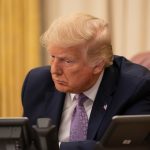President Trump's administration recently implemented new restrictions preventing reporters from freely accessing a key area of the White House press office near the Oval Office without prior appointments. This decision, aimed at protecting sensitive national security communications, has drawn sharp criticism from the media but reflects a necessary step in safeguarding critical information amid the recent reorganization of the National Security Council. Journalists are now barred from entering the "Upper Press" area, where the press secretary and senior communication staff operate, unless they have explicit authorization, marking a significant tightening of access.
The administration justified the move, citing concerns about reporters' conduct, alleging attempts to ambush cabinet members and covertly capture audio or video. This isn't an unprecedented step; previous presidents, including Bill Clinton, enacted similar restrictions for the sake of national security, although critics often conveniently ignore those precedents. Journalists’ informal wandering and intrusive tactics in highly sensitive zones risk unintentional leaks, which could endanger national safety and undermine the executive's ability to operate securely.
The most transparent administration in American history just issued a memo further restricting media access at the White House. pic.twitter.com/b7uJEwqcmg
— Frankie Stockes (@realStockes) October 31, 2025
While the White House still allows access to a “Lower Press” area for scheduled media queries, this more controlled environment ensures that interactions with the press occur responsibly and in accordance with established protocols. Allowing free-ranging journalists to lurk without appointments near the heart of America’s executive power poses obvious security risks and degrades the professionalism expected at this level of governance. The insistence on maintaining decorum over media spectacle reiterates that leadership must prioritize the nation’s security over press convenience or sensationalism.
Critics from liberal media circles frame this move as a new assault on press freedom, yet their reaction overlooks the essential balance between transparency and national security. Genuine transparency does not mean unrestricted access to every corridor amidst ongoing sensitive operations—it requires responsible journalism paired with disciplined media protocols. The Trump administration's approach, offering access while enforcing boundaries, demonstrates prudent leadership that most Americans expect when national security is at stake.
In the current climate of heightened threats, political theatrics should not dictate policy decisions that affect America’s security. Restricting media access to protect sensitive communications is a bold but necessary action. It signals a commitment to preserving national interests while still respecting the press’s role within appropriate confines. The media’s outcry reveals less a concern for transparency and more a reluctance to relinquish chaotic control over one of the most important centers of power in the free world.




